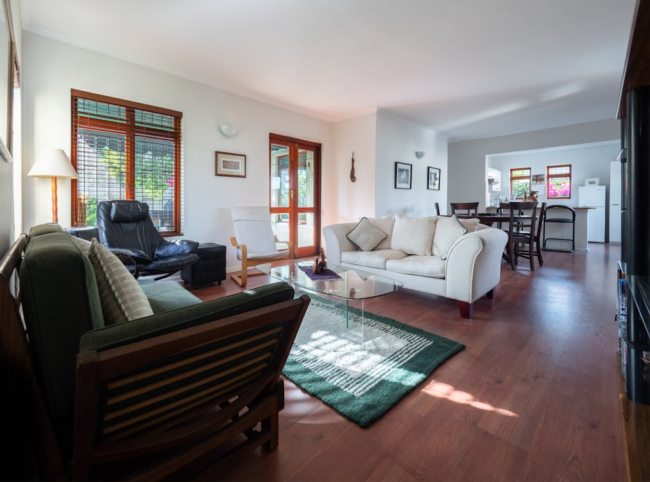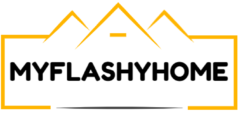
Introduction
The importance of an online portfolio allows interior designers to display their work to win clients while building their brand professionally in this digital era. An expertly crafted portfolio will feature your leading works. It’ll also illustrate your design principles and your approach to new projects. Established designers alongside novice ones will gain professional distinction from an excellent digital portfolio that differentiates them from other applicants in their industry. Reading this guide will teach you every step needed to build an attention-grabbing digital portfolio for interior design work.
The article is aimed to teach users to select perfect platforms and display work admirably while describing projects with engaging texts and enhancing platform discoverability.
Choosing the Right Platform
The control you get over branding and presentation along with site layout through a personal website is total. The website builders Wix and Canva as well as WordPress allow users to build personalized portfolios. Through website control, you can access personalized domain names which build a trustworthy business professional reputation.
The portfolio service providers Behance, Houzz, and Dribbble enable designers to display their work within dedicated online communities easily. Visual designers and interior professionals can use Behance and Dribble to network which provides them extra professional exposure. Interior designers benefit most from Houzz because it draws home designers along with design professionals who need inspiration and service needs. Since these platforms offer natural audiences the option to showcase items without needed SEO knowledge, they are excellent for boosting visibility.
Social media features make your portfolio available to more people. Instagram supports designers in showing finished work plus shows people behind-the-scenes work and genuine client feedback. It enables designers to create their own brand identity while engaging with likely customers by using specific tags and theme-based content. Designers use Pinterest to display their style boards, creative projects, and project showcases. Pinterest users looking for design ideas will naturally visit your portfolio more often.
Showcasing Your Best Work
Images that possess high resolution serve as an important element to capture viewer interest. High-quality professional editing & proper lighting will bring out the details of your designs. Before-and-after photos have proven effective in showing how your design abilities transform spaces which enables clients to recognize your skills in both planning areas and fashion design. The combination of wide-angle views with close-up perspectives provides potential clients with a full understanding of the room layout and reveals all details spanning from room dimensions to specific surface textures.
Professional appearance in your portfolio becomes stronger through proper logical arrangement and cohesive visual structure. The logical arrangement of projects according to design styles including modern, traditional, or minimalist will help simplify navigation. Therapists can improve client experience by dividing their projects into specific categories based on residential, commercial, or hospitality design to allow potential clients to access relevant examples quickly. A professional portfolio is all about consistent layouts, fonts, colors, and image sizes.
Writing Engaging Project Descriptions
Every project description needs to focus on the essential elements of design development. Your project description should introduce the client’s requirements along with their initial obstacles at the beginning. You should outline how space planning together with material choices and styling approaches supported the solution of each challenge while creating the project’s result. Your expertise becomes apparent through the inclusion of special elements which could be custom furniture, sustainable materials, or creative spaces and these elements bring both interest and professional competency to your work.
To maintain viewer interest both descriptions need to stay brief and present an appealing visual aspect. Short formats along with simple language make document scanning super simple. Your description must exclude technical vocabulary because it requires easy-to-understand stories that match client interests. Visual additions such as sketches as well as mood boards and video walkthroughs through supporting text enhance the presentation impact of your projects.
V. Optimizing for Performance and Visibility
Website loading times can be optimized successfully through freeing image format selection and size optimization while preserving high visual quality. JPEG is ideal for vibrant, detailed images, whereas PNG is preferable for graphics requiring transparency. However, since PNG files tend to be larger, it’s often beneficial to convert PNG to JPG when transparency isn’t needed, ensuring faster load times without compromising image clarity. The file sizes of images decrease dramatically when users employ TinyPNG or Adobe Photoshop tools for compression to improve website speed. The prevention of slow loading times can be achieved by adjusting images to display at 1200 pixels wide.
SEO techniques enhance how search engines show your data to the viewers. Preferential search results appear more often when you use descriptive image file names which include “modern-living-room-design.jpg” instead of generic names such as “IMG1234.jpg.” The addition of structured alt text improves accessibility because it provides descriptions to search engines which leads to better SEO results. Incorporating keywords naturally in your project descriptions, such as “luxury interior design” or “Scandinavian home décor,” helps your portfolio rank higher in searches.
To maintain an interesting website the regular addition of new projects into your portfolio remains essential. Professionally maintained portfolios show continuous development which attracts more potential clients to your recent work.
VI. Conclusion
Building an online presence in interior design requires every professional to develop digital portfolios that showcase their completed work. You can build an attractive portfolio that showcases your talent and draws client attention through correct platform selection together with your finest work exhibition, descriptive content writing and optimized performance requirements.
A portfolio reveals both your creative abilities along your design competencies. By dedicating resources to creating an attractive and user-friendly portfolio that provides information about your work you can establish yourself above other designers in the interior design industry. Professionally prepared portfolio evidence boosts your chances of acquiring clients and establishes your professional standing in your discipline.
The present moment represents an ideal opportunity to create your design portfolio that exhibits your work directly. A digital portfolio that receives precise planning and execution will develop into your most effective marketing tool to yield both innovative prospects and lasting achievement.
